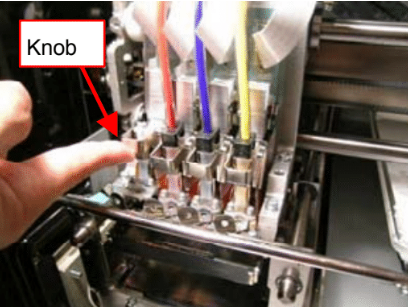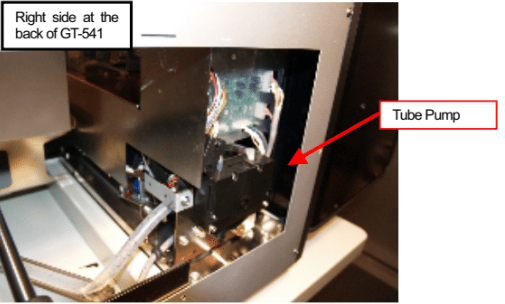

With newly developed print driver software, no separate and costly RIP (raster image processor) is required. The machine also features large sized ink cartridges which enable more economical operations.

Apart from the normal platen size of 14” X 16”, oversize platens of 16” X 18” are provided alongside for printing on large garments. It has independently controlled dual platen and dual printhead modules, which means that two garments can be printed simultaneously with independent individual design for each. There are many other features to this new model which makes it desirable, especially so for high volume shops.

GT-782 not only counteracts this problem with genuine white ink and ink cartridge system, but also provides sharp and durable designs using white ink. Until the printer has the means to keep the ink stirred, it is very difficult to handle white ink inside an ink delivery system. As a result they tend to sink to the bottom and form a layer which clogs the printhead. The reason for the whiteness of the ink is the presence of titanium dioxide particles in the aqueous solution of the ink, which is heavier than the other particles. This ability to store and print white ink is unique as there are typical problems related to the handling and storage of white ink.

With many of their parts and printheads same, GT-782 scores above GT-541 in its ability to print on dark and black coloured garments as it can print white ink too. The latest to come out of their stable is the GT-782 “High Powered White Ink” inkjet garment printer which is the successor of the highly successful GT-541, white and light coloured garment printer. Of the many companies offering digital garment inkjet printers, Brother is one company that offers high quality printers. It also facilitates the printing of more complex designs. A digital inkjet garment printer allows printing directly from the computer on the garment, without all the setup mess and high cost of traditional screen printing machines. With the advent of digital inkjet printing, the time required and the complexity involved in surface printing were reduced to a great extent. Every year the complexity of designs in demand is increasing and so has to the technology which supports such sharp designs. Surface printing has always been an extremely popular option for garment ornamentation, the main reason for which is the creativity it allows with the designs.


 0 kommentar(er)
0 kommentar(er)
